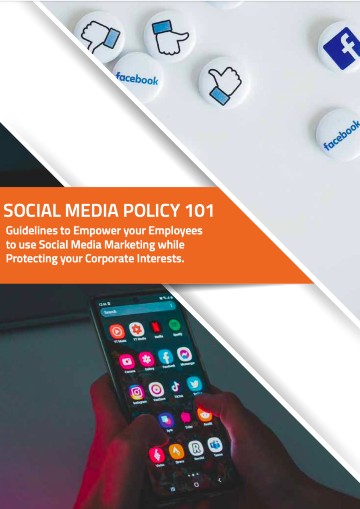
Has social media-enabled organic reach reached its end? The numbers aren’t encouraging enough.
Organic reach on social media is essentially how effectively your posts perform without a financial push. And given the pace at which algorithms are changes across all the channels, it’s red flags all the way.
The first name that pops to mind is Facebook, where it’s an open secret that organic reach has been on the decline for a while. With the world’s most massive social media platform prioritizing content from family and friends in their newsfeeds over that from publishers and pages, marketing teams across the world went into a tizzy.
“You’ll see less public content like posts from businesses, brands, and media,” said CEO Mark Zuckerberg at the beginning of 2018. “And the public content you see more will be held to the same standard – it should encourage meaningful interactions between people.”
The scary part is that if it’s happening on Facebook, it’s happening with other channels too. In other words, that great social media strategy that worked brilliantly two years ago? As good as a dud now. Social media posts just aren’t reaching as big an audience as they used to before. Uh-oh.
If your social media planning is beginning to feel like the nightmare before Christmas, it’s time you rolled up your socks and did something about it. Here are the top five ways to stop your brand from spiralling into digital oblivion.
Focus on quality over quantity.
Yes, we’ve had it drilled into our heads that creating a constant buzz aids top-of-mind recall. But it’s time to move away from that. Relevant, long-term relationships beat awareness any day and work far better in terms of conversions.
Great content is thoughtful and relevant and resonates with your audience. Your readers are more likely to share such content, engage with it, and, most importantly, keep them coming back for more. Back in October 2017, Bored Panda racked up 116 million site visitors, up from 17 million per month in 2016. The company attributed the growth spurt predominantly to organic reach and traffic via Facebook. “My main idea was, I can’t compete with the big guys, so I have to do fewer articles but do them better,” said founder Tomas Banišauskas. It worked like a charm. And the rest, as they say, is history.
Know your algorithms.
Organic reach on social media is majorly determined by algorithms, which keep changing. They decide what every user sees – and in what order – on their timeline. Since algorithm creators are working overtime to ensure that users see what they want the most (right on top), your battle is to keep your content relevant enough to keep getting chosen. While the parameters considered in algorithms may change from one platform to another, relevance to the user remains one of the top parameters across all major channels – Twitter, Facebook, and Instagram. While social media channels trying to humanize the algorithms, you need to be aware of them and try to work it to your marketing advantage.
Keep it fresh.
Don’t repost the same message across platforms. Your content should be contextualized to the platform it’s published on, and the type of audience you reach on it. For instance, Instagram is great to showcase visual content and stories, and for close-up, behind-the-scenes sneak peeks into your brand. On the other hand, Twitter’s far better to fuel and engage in online discussions based on your company’s published blogs or C-suite viewpoints. Then you have Facebook, which is best suited for live video streaming, news updates, and short corporate/ product videos. Of course, if you have content that’s relevant on more than one channel, mix it up – just sequence the postings on different days and you’re good.
Go after influencer and user-generated content.
It’s true, marketing brings out the narcissistic best in the best of us. But, as life teaches us time and time again, it’s never all about you. No one’s interested in one-sided conversations where you push out your own content at every opportunity, praying that you’ll become an acquired taste with your audience (you won’t). Social media is (no-brainer alert!) social. In other words, sharing third-party content is just as (or maybe even more) important than sharing your own content. And by keeping your readers at the centre of what you do, you position your brand as one that cares, knows its industry, and can be trusted.
Influencers deserve a special mention here. The rock stars of the social media world have the power to sway large sections of your audience. A word of caution, though – stay away from celebrities or any other influencers who have no connection whatsoever with your brand. The trick is to find influencers who share your ethics.
Authentic influencers may not have the reach of the Kardashians, but they don’t sell out. Thus, curating the right mix of third-party content into your own marketing content can save you time as well as money, besides keeping things fresh (wait, did we just mention that higher up here?). This is where micro and nano influencers come in.
Set the right cadence.
Working on organic reach is like adopting a pet – it’s no set-it-and-forget-it system for sure. A single, solid post is far more effective when followed up with another linked post (or a series of them, targeting multiple perspectives). So start chugging. Consistent posts are great for your audiences as well as the algorithms. Regular posts help keep you on your readers’ radar. That said, no, we’re not contradicting point 1 above. The idea is not to disappear altogether but to set a cadence that you can cope with. Consistent posts set up users’ expectations, and also get noticed by social algorithms, which are watching to see who engages with your content. The more data you generate via engaging interactions, the harder it is for the algorithm Gods to ignore you.
To effectively organize and disseminate all your thoughtfully curated content, you might want to think about using a platform like Socxo.























